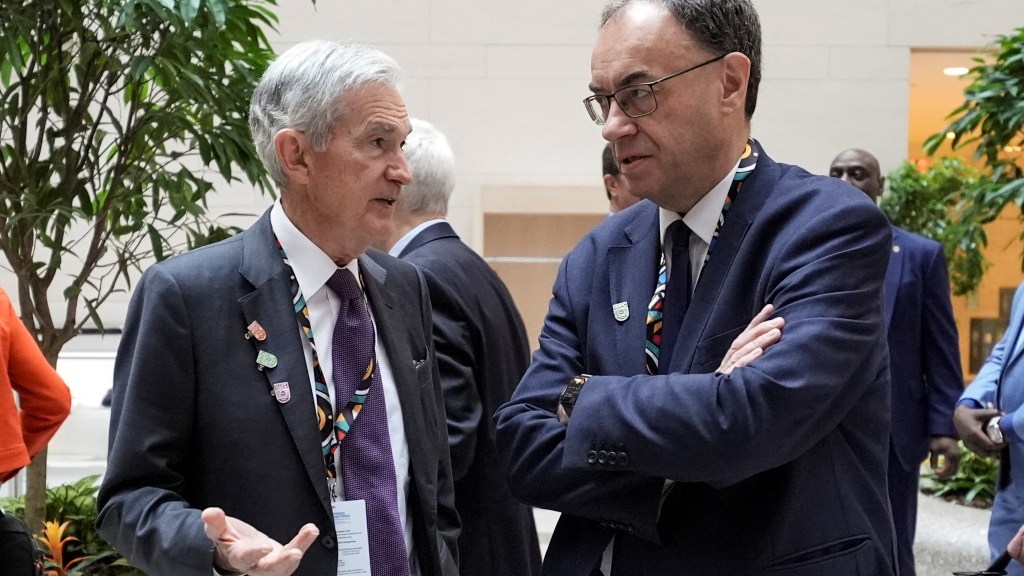Impact of President Trump’s Tariffs on UK Economic Growth
New forecasts indicate that disruptions in global trade and market volatility caused by President Trump’s tariff policies are set to hinder the UK’s economic growth for this year and next.
According to projections, the UK economy is expected to grow by just 0.8% in 2023, a decline from the 1% growth anticipated back in February prior to Trump’s announcement of significant tariffs. Additionally, the growth estimate for 2026 has also been revised down to 0.9% from an earlier prediction of 1.6%, according to EY Item Club.
As a result of the tariffs—10% on all British exports to the United States and 25% on steel, aluminum, and automobiles—both businesses and consumers are likely to become more cautious, leading to reduced spending in the latter half of this year.
The revised growth forecasts are notably lower than those from the International Monetary Fund, which recently adjusted its expectations for the UK’s growth to 1.1% this year and 1.4% for next year. Rachel Reeves, the Chancellor, participated in an IMF meeting aiming for progress on a trade deal with the US.
Major UK business organizations have largely backed the government’s strategy of pursuing negotiations rather than resorting to retaliatory measures.
In a related finding from a survey conducted by BDO involving 500 business leaders, many mid-sized companies are proactively addressing potential supply chain disruptions and new international tariffs by exploring alternative international market routes.
EY Item Club anticipates that the US will maintain an average tariff rate exceeding 20% for many other countries, complicating access for some UK exports to vital markets and diminishing overall demand for UK goods.
Approximately 16% of British goods exports are directed towards the US, and exports to that market are projected to decrease by around 0.5% in 2023 and by 0.4% in 2026.
Andrew Bailey, Governor of the Bank of England, also emphasized the serious risks posed by trade wars on global economic growth during his visit to Washington last week.
The erratic nature of trading relationships is expected to dampen business investment in the UK, further compounded by rising labor costs stemming from increased minimum wage and employer national insurance contributions.
Business investment growth projections have been significantly downgraded to 0.3% for this year and 1% for the next, down from earlier estimates of 2% and 1.8% made in February.
Anna Anthony, the regional managing partner for EY UK & Ireland, noted that uncertainty in the global market is likely linked to reduced business investment in the short term, as companies thrive in stable environments.
However, there are still some positive indicators, as the services-led UK economy is expected to continue growing, and gradual interest rate reductions might help stimulate business and consumer spending.
Economic growth is now predicted to rise to moderate levels of 1.5%, but this is now anticipated to occur in 2027 instead of next year.
Matt Swannell, chief economic adviser for the EY Item Club, indicated that the inflationary impact of tariffs on the UK remains uncertain but is generally expected to exert downward pressure on inflation.
Inflation is forecasted to exceed 3% this month, remaining at that level for much of the year, before expected declines to 2.4% in the following year.
The unemployment rate is projected to increase by 0.5%, nearing 5% by year-end. Coupled with declining wage growth and persistently high inflation, this situation may limit real household income growth from nearly 4% last year to below 2% by 2025, subsequently constricting household spending growth to 0.9% this year, down from earlier forecasts of 1.6%.
Bailey mentioned that the central bank is currently assessing the potential implications of Trump’s tariffs ahead of the upcoming monetary policy meeting in May.
According to EY Item Club, the Bank rate is expected to conclude 2025 at 3.75%, with a reduction anticipated to 3.5% in February 2026.




Post Comment